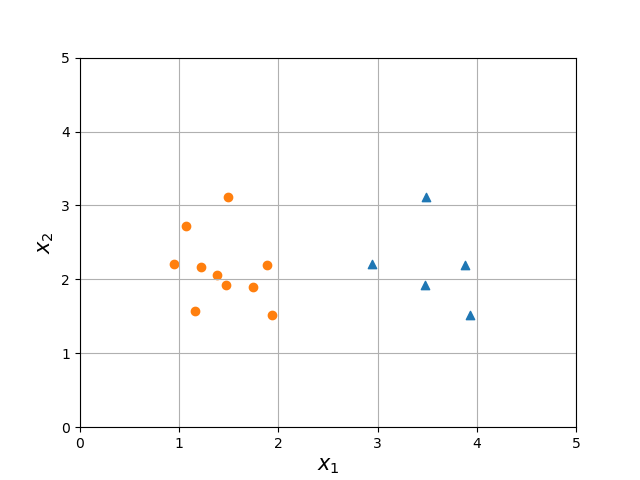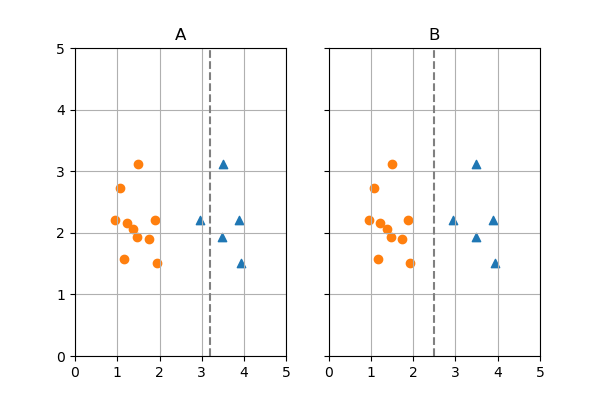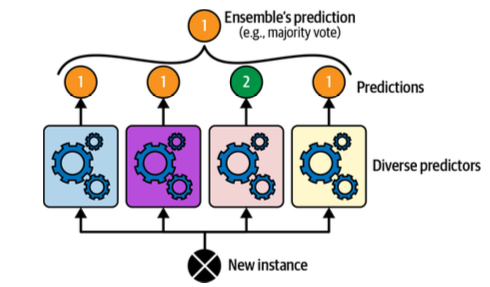Decision Trees and Random Forests¶
Prof. Forrest Davis
Apply a decision tree to new data¶
- Consider the following decision tree (from the book).
Question: Classify a new data point with the following values:
- petal length: 2.50cm
- petal width: 1.75cm

Step One: A classification problem (our old friend, the bad plots)¶
- Consider the following figure.

Question: Calculate the Gini impurity.
Hint: You can get the Gini impurity if you can answer the following question:
- What is the probability of classifying a point incorrectly (e.g., if I select a triangle, and I guessed based on the labels I know exist, what is the likelihood I misclassify a triangle)?
Step Two: Apply Gini impurity¶
- Consider the following two potential decision boundaries:

Question: Calculate the Gini impurity for the left and right regions for each decision boundary
Question: Calculate the CART cost function value for both decision boundaries
Question: How much information did I gain with each decision bounday?
Consider a binary classification task. Three decision boundaries with the following properties are generated. Determine their Gini values.
- All points belong to class 1
- Half of the points belong to class 1
- None of the points belong to class 1
Step Three: CART Algorithm Sketch¶
Guiding Questions:
- Sketch out the CART Algorithm
- Why is this algorithm greedy?
- What are possible stopping criteria?
Learning a decision tree for continuous data¶
- Given the following sample data, use the CART algorithm to learn a decision tree.
| Sample | F$_1$ | Y |
|---|---|---|
| 1 | 2.2 | 1 |
| 2 | 3.2 | 0 |
| 3 | 4.2 | 0 |
| 4 | 4.6 | 1 |
| 5 | 5.6 | 1 |
Learning a decision tree for non-binary categorical data¶
Question
- Given the following sample data, use the CART algorithm to learn a decision tree.
| Sample | F$_1$ | F$_2$ | Y |
|---|---|---|---|
| 1 | A | cat | 1 |
| 2 | B | cat | 1 |
| 3 | A | cookie | 0 |
| 4 | C | cookie | 0 |
| 5 | C | dog | 0 |
| 6 | B | dog | 1 |
| 7 | A | cat | 1 |
Limitations of Decision Trees¶
Question What are some limitations of decision trees?
Random Forests, Ensemble Learning, and Voting Classifiers¶
- Random forests: train a bunch of decision trees on your data (adding in some randomness to ensure differences between each decision tree).
- Ensemble learning: train a bunch of models and use them all to make a prediction
- Voting Classifiers is one approach to ensemble learning.
